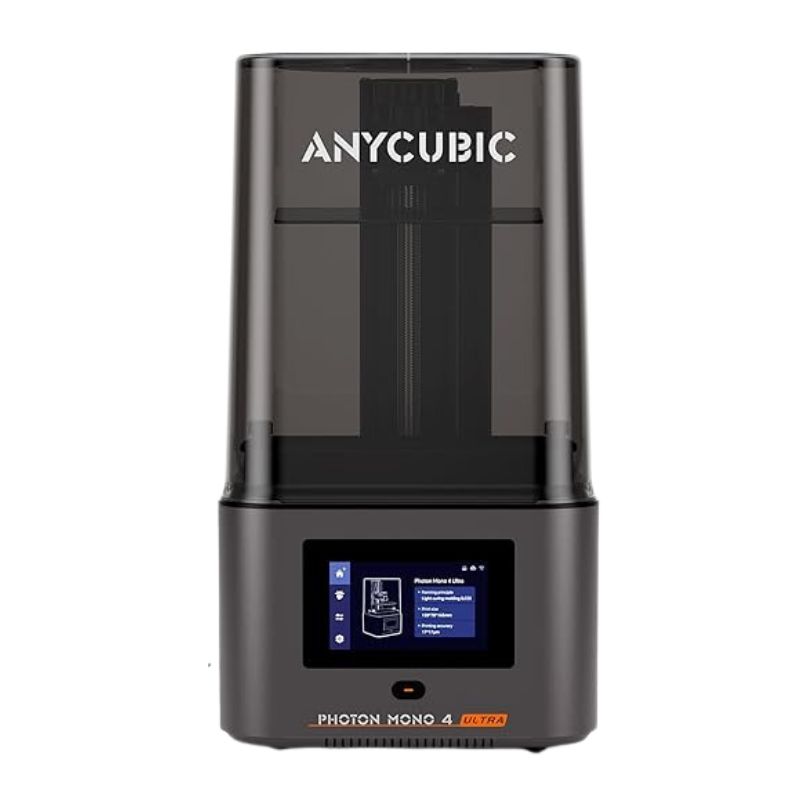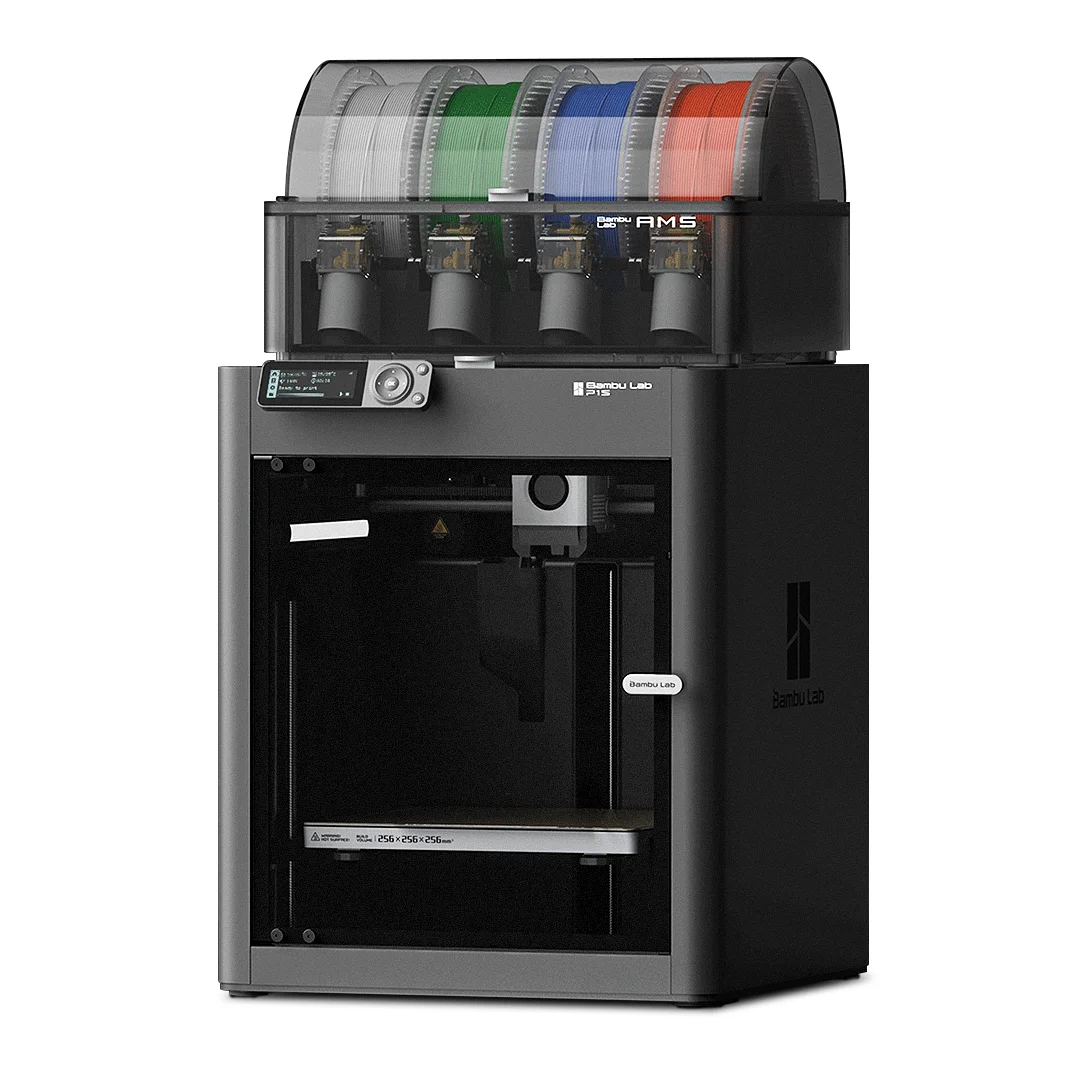Compare Photo Mono 4 Ultra vs P1S
Comparison between the best 3D printers
Choose the best 3D printer at the best price. The cheapest 3D printers are here.
Buy a 3D printer here with 3D Fila.
 |
 |
|
| Model | Photo Mono 4 Ultra[BUY Photo Mono 4 Ultra] |
P1S[BUY P1S] |
| Printing Material | Resin | Filament |
| Buy Resin for Anycubic Photo Mono 4 Ultra | Buy Filament forBambu Lab P1S | |
| Estimated price | $250,00 | $949,00 |
| Manufacturer | Anycubic | Bambu Lab |
| Release Year | 2024 | 2023 |
| Print Volume [mm] | 153x87x165 | 256x256x256 |
| Printer Size [mm] | 231x236x430 | 389x389x458 |
| Weight [kg] | 5 | 12,95 |
| Power Loss Recovery | NO | YES |
| Maximum Resolution [mm] | 0,01 | 0,1 |
| Processor | Quad ARM A7 1.2 GHz | |
| Display | Touchscreen 4.3'' | Touchscreen 5'' |
| Power Supply | 350 W | |
| Connectivity | USB | Wifi, Bambu bus, Cartão SD |
| Operating systems | Windows, Mac | Windows, Linux, Macbook |
| Date of registration in the system | 2024-12-13 | 2024-04-11 |
| Release date | 2024 | 2023 |
| Extra features | The Anycubic Photon Mono 4 Ultra features 10K resolution (9024x5120) with 17x17um pixels and high light uniformity (>=90%) enabled by the COB system with Fresnel lens and uniformity algorithm. It offers a build volume of 153.4x87x165 mm and speeds up to 120 mm/h with high-performance resin. It includes assisted leveling, built-in Wi-Fi, and a redesigned platform for better adhesion and easy model removal. Additionally, it has a print resumption function after power outages, optimizing time and materials. | The Bambu Lab P1S stands out for its out-of-the-box practicality, eliminating the need for manual adjustments with automatic calibrations such as bed leveling and vibration compensation. It features multicolor printing capability through the AMS system, allowing up to 16 colors when connecting four AMS units. With an advanced control algorithm, the P1S offers fast printing speeds without sacrificing quality. Equipped with modern features such as filament end sensor, semi-automatic belt tension, direct extruder, welded frame and all-metal hotend, along with a fully enclosed chamber, the P1S promotes a superior printing experience, supporting a wide range of materials. |
| Support for multiple colors and materials (AMS and CFS) | NO | YES |
Notes * |
||
| Cost-benefit | 8 / 10 | 7 / 10 |
| Hardware | 6.3 / 10 | 6.4 / 10 |
| Tela | . | . |
| Print volume | 3 / 10 | 4 / 10 |
| Performance | 9 / 10 | 4 / 10 |
| [BUY Photo Mono 4 Ultra] | [BUY P1S] |
Conclusion |
| In comparing the Anycubic Photo Mono 4 Ultra and the Bambu Lab P1S, several key differences highlight the strengths and weaknesses of each printer, ultimately guiding consumers toward the best choice based on their specific needs and budget. The Anycubic Photo Mono 4 Ultra is a more affordable option, designed with a focus on high-resolution resin printing. Its compact design and lightweight nature make it suitable for users with limited space, while its advanced features, such as high light uniformity and efficient print resumption after power loss, offer strong value for hobbyists and those new to 3D printing. The printer’s print volume, while smaller, is complemented by its excellent performance and print quality, making it a solid choice for detailed projects. However, it lacks the versatility of material support and multicolor capabilities found in higher-end models. On the other hand, the Bambu Lab P1S, although significantly more expensive, brings a wealth of advanced features that cater to serious users and professionals. It excels in print volume, speed, and material compatibility, allowing for greater creativity and flexibility in projects. The automatic calibration features and advanced control algorithms enhance the user experience, minimizing the need for manual adjustments. However, its higher price point and larger size may deter casual users or those with budget constraints. In summary, the Anycubic Photo Mono 4 Ultra is an excellent choice for those seeking high-detail prints at a lower cost, focusing on resin printing and facilitating easier entry into 3D printing. The Bambu Lab P1S, while pricier, delivers superior versatility and performance for users who are ready to invest in a professional-grade machine. Ultimately, the best choice depends on individual requirements—whether one prioritizes affordability and detail or a robust and multifaceted printing experience. |

